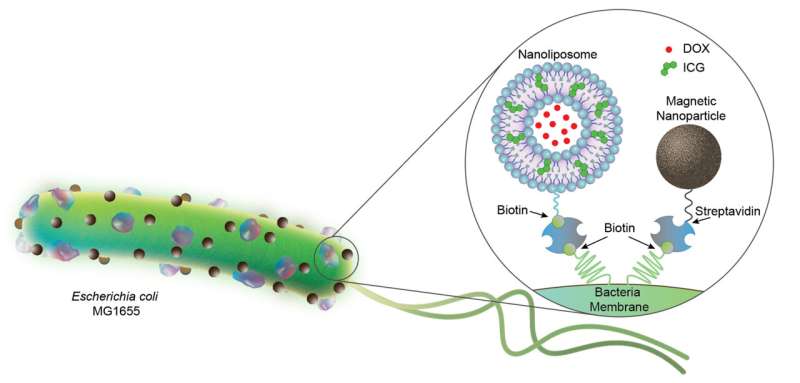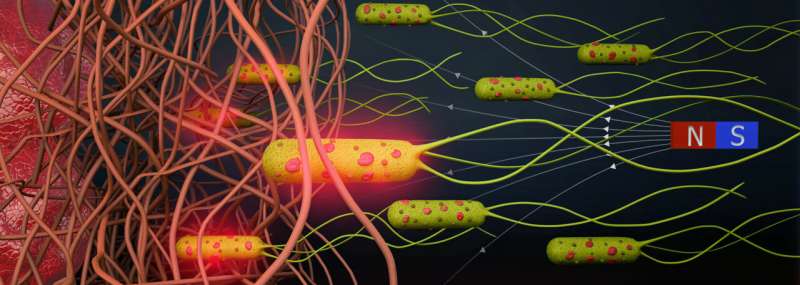
A group of scientists in the Physical Intelligence Department at the Max Planck Institute for Intelligent Systems have created bio hybrid microrobots. The team attached several small particles to each bacterium. On their outer circle, these spherical-shaped carriers hold a material that will melt when illuminated by near-IR light. The liposomes encapsulated the DOX in the middle.
Magnetic nanoparticles are attached to the bacterium. Iron oxide particles act as a booster to this already motile microorganism. It's easier to control the swimming ofbacteria in this way. The rope binding the liposomes and magnetic particles to the bacterium is very stable and hard to break and comes in useful when constructing bio hybrid microrobots.
E colibacteria are fast and can swim through a wide range of fluids. They have even more advanced sensor capabilities. Low oxygen levels and high acidity are common near tumors. Treatments for cancer that involve injectingbacteria in proximity are known as bacteria mediated tumors. The immune system of patients is activated by the growth of the microorganisms in the location of the tumors. More than a century has passed since the first use of the therapy.
Scientists have been looking for ways to increase the power of this microorganism for a long time. Extra components were used to help fight the battle. Adding artificial components is difficult. The density rate of particles loaded onto the bacterium is important to avoid dilution. The team has raised the bar a lot. Out of 100bacteria, 86 were equipped with magnetic particles.
The scientists showed how they were able to steer the high density solution through different courses. First, through an L-shaped narrow channel with two compartments on each end. The set-up looked like small blood vessels. They put an extra permanent magnet on one side to show how they control the drug-laden microrobots. The team steered the microrobots through aCollagen gel with three levels of rigidity and elasticity. The tighter the web ofprotein strings the harder it is for thebacteria to get through the matrix. The team showed that once the magnetic field was added, thebacteria were able to move all the way to the other side of the gel. The bacteria were able to find a way through the fibers.
After the microrobots are accumulated at the tumor spheroid, a laser emits rays with temperatures of up to 55 degrees Celsius, triggering a melting process of the liposome and a release of the drugs. The drugs are released near a tumor if the pH level is low.

Imagine injecting microrobots into a patient's body. The particles could be steered towards the tumors. Once we have enough microrobots around the tumor, we can point a laser at it. The immune system is triggered to wake up and the drugs help destroy the tumors. She is the first author of a publication titled "Magnetically steerable bacterial microrobots moving in 3D biological matrices for stimuli-responsive cargo delivery". It was published in a journal.
One day, bio hybrid microrobots could be used to fight cancer. Prof. Dr. Metin Sitti is the last author of the publication and he says that it is a new therapeutic approach not too far away from how we treat cancer today. Medical microrobots can seek and destroy tumors. Basic research that aims to benefit our society is what our work is about.
More information: Mukrime Birgul Akolpoglu et al, Magnetically steerable bacterial microrobots moving in 3D biological matrices for stimuli-responsive cargo delivery, Science Advances (2022). DOI: 10.1126/sciadv.abo6163. www.science.org/doi/10.1126/sciadv.abo6163 Journal information: Science Advances , Nature